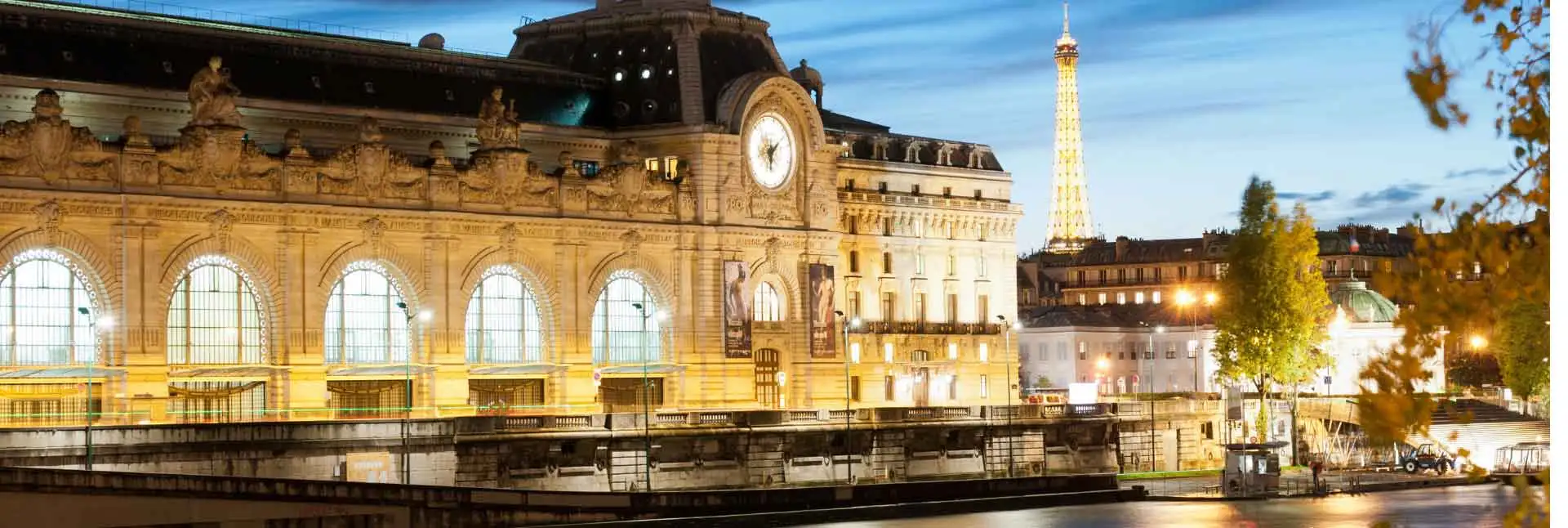
Why is the Musée d’Orsay Famous? Facts and Curiosities
The Musée d’Orsay is one of the cultural jewels of Paris, famous for its unparalleled art collection, its history, and the architecture of the building that houses it. Located on the banks of the Seine, this museum has witnessed an astonishing transformation of Paris from its construction to today. But what really makes it famous?
A Building with History: From Train Station to Musée d’Orsay
Before becoming the Musée d’Orsay, the building was a train station. Its history dates back to the late 19th century when Paris needed a modern terminal to welcome visitors for the 1900 Exposition Universelle, the same event that led to the construction of the Eiffel Tower.
The railway company Compagnie du chemin de fer de Paris à Orléans commissioned its design to architect Victor Laloux, who created an innovative building for the time: an iron and glass structure covered in stone, harmonizing with the architectural elegance of the French capital.
The station operated for several decades, but over time became obsolete for long-distance trains. It was closed in 1939 and, for years, had various uses, including being a package and cargo center during World War II.
The Transformation into the Musée d’Orsay
In the 1970s, the building was at risk of being demolished. However, thanks to the intervention of President Valéry Giscard d’Estaing, it was decided to preserve its structure and convert it into a museum. The restoration was led by architects Renaud Bardon, Pierre Colboc, and Jean-Paul Philippon, with the collaboration of designer Gae Aulenti, who transformed the large spaces into exhibition galleries.
Finally, in 1986, the Musée d’Orsay opened its doors to the public, specializing in 19th and early 20th-century art. Its collection includes masterpieces by artists such as Monet, Van Gogh, Renoir, and Degas, making it a benchmark for Impressionism and Post-Impressionism.
Architecture and Iconic Elements
One of the most striking aspects of the Musée d’Orsay is its architectural design. The grand central hall, which once housed the train tracks, is now a bright and grand space where sculptures and paintings are displayed.
Among the most emblematic elements is its monumental clock, located at the far end of the museum, offering a panoramic view of the city through its enormous glass face. This clock, which once helped passengers catch their trains, is now a symbol that you can enjoy when you book your visit to the Musée d’Orsay.
The iron and glass ceiling is also an engineering marvel, allowing natural light to flood the space and highlight the works of art on display. This design, unusual for a museum, creates a unique atmosphere that envelops visitors in an artistic ambiance you won’t find anywhere else.
The Musée d’Orsay Collection: A Treasure of Impressionist Art
While the architecture of the Musée d’Orsay is reason enough to visit, its art collection is what truly makes it famous. It houses some of the most iconic works in the world, such as Renoir’s "Dance at the Moulin de la Galette," Van Gogh’s "Starry Night Over the Rhône," and Manet’s "Luncheon on the Grass."
The museum also has an important selection of sculptures, photographs, and decorative arts, featuring works by great masters like Auguste Rodin and Camille Claudel. Additionally, its decorative arts collection includes Art Nouveau furniture and designs, reflecting the elegance and refinement of the era.
Photography also holds a significant place, with a wide variety of images documenting the evolution of visual art in the 19th and 20th centuries, making this museum a must-visit for art lovers in all its forms.
Thus, the Musée d’Orsay is not only famous for its art collection but also for the history that its walls hide. Its transformation from a train station into one of the world’s most important museums makes it an example of how architectural heritage can have a new life and should serve as an inspiration for the creation and maintenance of new spaces.
Are you planning a trip to Paris? Don’t hesitate to include it in your itinerary. And if you want to discover it with an expert guide, check out our tours, and we’ll show you all its secrets.